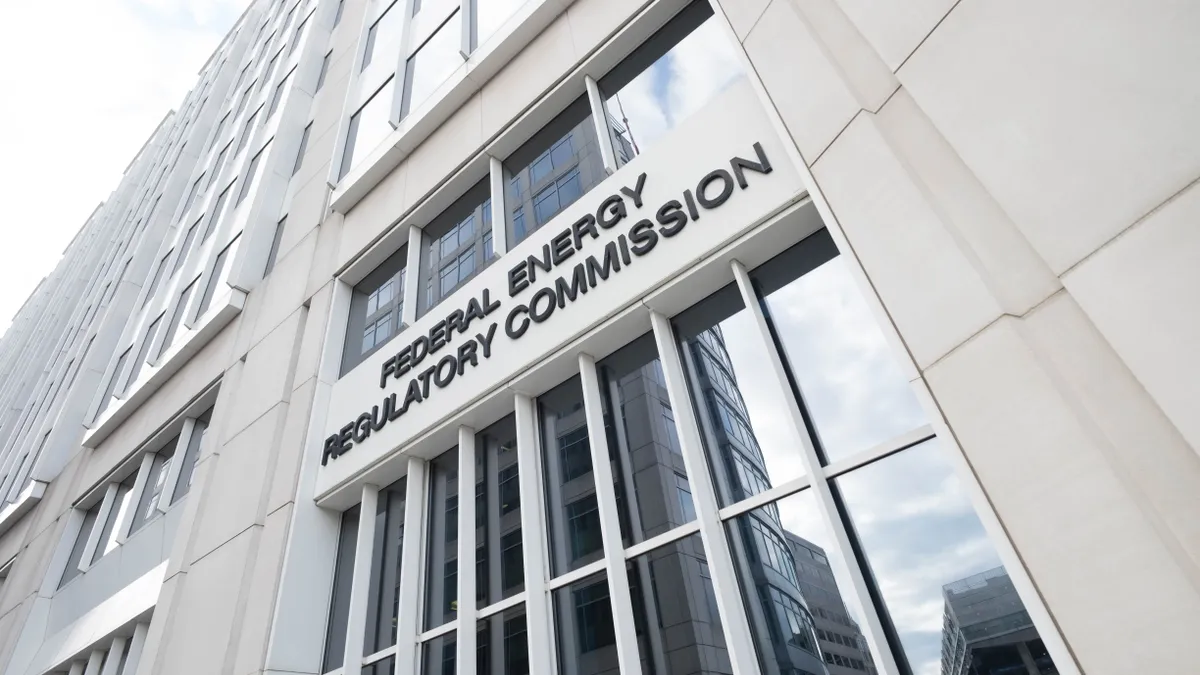Dive Brief:
- The Federal Energy Regulatory Commission on Thursday issued new orders on energy storage participation in wholesale power markets and frequency response services provided by generators.
- FERC directed regional grid operators to devise new tariffs for storage market participation that allow the resources to provide multiple electricity market services, as well as set power market prices as purchasers and sellers of energy. The commission could not settle on similar directives for DER aggregations, however, and called a technical conference for April 10-11.
- FERC also issued rules that require new generation resources, including renewables, to provide frequency response services. Nuclear and combined heat and power (CHP) resources are excluded from the order.
Dive Insight:
FERC's new energy storage order, approved in a 5-0 vote at its Feb. 15 meeting, sets a number of requirements for new grid operator rules on energy storage.
New tariffs must:
- Allow storage to provide energy, capacity and ancillary services;
- Allow storage to set wholesale market prices as a buyer or seller of electricity;
- Respect the operational characteristics of storage, such as discharge duration or state-of-charge requirements, and;
- Set a minimum size for market participation not more than 100 kW.
The order also requires that electricity sales to storage resources that the storage later resells to the market must be done at the wholesale locational marginal price of electricity. Grid operators will have 270 days to devise the tariffs after FERC's order is published in the Federal Register and a year to implement the changes after they are approved.
FERC staffers said their order will help enhance the resilience of the bulk power sector — the subject of a high-profile proceeding at the agency set up by the denial of a Trump administration subsidy package for generators.
"Participation [of storage] in the energy markets as a buyer and seller can reduce stress on the system by both shifting load away from peak conditions and reducing overgeneration during low load conditions," staff said during the open meeting. "Electric storage resources are also well suited to provide services like frequency regulation and ramping services, which are a first resort on correcting system frequency and helping to avoid contingency events."
Additionally, the order would allow storage to provide black-start and reactive power services, "which are critical to bringing the bulk power system back online" after an outage.
Technical conference
At the open meeting, FERC commissioners and the chairman expressed disappointment that they could not issue an order similar to their storage decision on how aggregations of distributed energy resources can participate in power markets.
"It would have been great if we could have addressed both storage resources and distributed energy resources today rather than having to schedule a further ... conference," Chairman Kevin McIntyre told reporters. "But really after looking at the state of the record in those two side-by-side issues, we determined that we needed to bolster our record on the distributed energy resources."
A two-day technical conference in April aims to provide that bolstering. During the meeting Commissioner Cheryl LaFleur, a Democrat, laid out two of her key areas of inquiry for the conference:
- "Money issues" — because aggregated DERs are diverse and can provide multiple services, "who pays what, to whom, for what?"
- "Operational issues" — how utilities that control the distribution system can communicate with grid operators to allow aggregated DER participation.
Frequency response
The storage order was not the only FERC action to enhance grid resilience on Thursday, staff said. The frequency response order will also ensure that batteries and other resources can help the grid respond to interruptions.
The new rule mandates that any new generator filing an interconnection agreement will have to provide frequency response services, which help the grid to stabilize after unexpected outages of other generators.
Currently, large central station power plants largely provide frequency response services, but regulators noted the service availability has declined as these plants are increasingly replaced with wind and solar generation. Advances in inverter technology, meanwhile have made it cheaper for renewable resources to provide these services.
"What today's rule observes is in recent years non-synchronous generation like wind and solar has developed the capability to cost effectively include primary frequency response and do their part for the system," LaFleur said.
The rule does not, she noted, mandate market pricing for frequency response or direct a new mandatory reliability standard. Those will be options the commission can take if it sees fit in the future, she said.
"I think we should monitor the impact of today's rule and monitor frequency response performance going forward and consider additional actions, whether it's market pricing of frequency response or different reliability actions as appropriate moving forward," LaFleur said.














